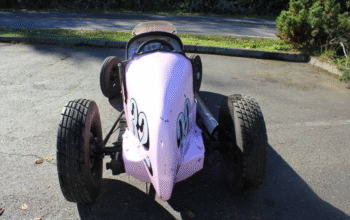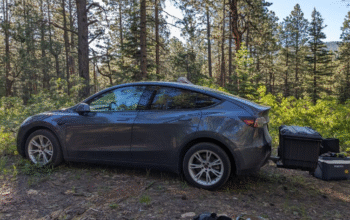When you pull the washer switch to clean your windshield, it can be frustrating if nothing happens. There should be washer fluid sprayed onto your windshield, but nothing happens at all. You are left with a dirty windscreen and terrible visibility. Washer jets that do not spray are more than an inconvenience — they are a safety issue. Fortunately, in the vast majority of cases, you can fix the problem in your own garage, without the need of a mechanic.
In this article, we’ll cover the possible causes of washer jets not working, then go over some simple repair steps that can get your washer system back up and running.
Why Washer Jets Stop Spraying
Before we get into the fix, it’s helpful to understand the whole system. Windshield washer systems are generally quite simple. They include a washer fluid reservoir, an electric pump, rubber or plastic hose; and nozzles. If any one part of the system fails, the jets could stop spraying.
Here are the most common reasons why:
- The washer fluid reservoir is empty
- The nozzles are clogged with dirt or debris
- The fluid has frozen in cold weather
- The washer pump is faulty or burned out
- The fuse has blown
- The hoses are kinked, disconnected, or leaking
- The washer fluid is low-quality or inappropriate for your climate
Now, let’s go step by step and troubleshoot the problem.
Step 1: Check Washer Fluid Level

SBegin with the easy check. Pull the hood latch, lift the hood, and locate the washer fluid reservoir. Typically a translucent plastic reservoir with a windshield with water icon on the cap, refill the reservoir with washer fluid (not plain water). If you live in a cold climate, use a winter-ready fluid that resists freezing.
After refilling the reservoir, try pulling the washer handle. If it sprays now, it was just low fluid. If nothing happens, then continue on to the next step.
Step 2: Listen for the Washer Pump Sound

Ask someone to sit in the car and press the windshield washer button. Stand next to the front of the car and listen near the washer fluid reservoir. If the pump is working, you should hear a humming or buzzing sound. If you hear it, then the pump is attempting to send fluid which probably means the blockage is further in the lines. If you don’t hear anything, the pump may be broken, or not getting power.
Step 3: Inspect the Washer Nozzles for Clogs

Washer nozzles are tiny, easily clogged by road grime, wax, or dirt. Take a sewing needle, straight pin, or a thin wire and gently insert it into the nozzle tip. Gently twist it to clear some debris. Be careful with this as you do not want to damage the tiny opening.
You can also use compressed air and blow it into the nozzle to remove dirt. Test the washer again after you have cleaned it.
If you don’t know if the nozzles are the issue, disconnect the hose from the back of the nozzle and see if fluid sprays out of the hose. If it sprays you know the nozzles were plugged.
Step 4: Examine the Washer Hoses

Follow the rubber or plastic tubing that connects the washer pump to the nozzles. These hoses can:
- Crack or split, causing leaks
- Get pinched or kinked under the hood
- Disconnect due to engine vibration or wear
Look them over and feel along the hose with your fingers. If there is a crack or leak in the hose, the hose should be replaced. If the hose is loose or off, the hose just needs to be reconnected and fastened using a small hose clamp or zip tie.
To check for internal clogs, unhook one end of the hose and blow air through it. Replace the hose with tubing that is washer-safe from an auto parts store if it is clogged.
Step 5: Check for Frozen Washer Fluid

In cold weather, water or low-quality washer fluid can freeze inside the system. If this happens, no spray will come out — even if the pump works.
Signs of frozen fluid include:
- Fluid doesn’t move despite pump noise
- You can see frost or ice inside the reservoir or hoses
- Fluid hasn’t gone down after repeated attempts
To fix the problem, relocate the vehicle to a warmer location (like a garage). You may also add cold-weather washer fluid that contains antifreeze. Do NOT pour hot water on the reservoir or nozzles because the extreme temperature change will cause plastic parts to crack.
Once thawed, drain any residual frozen fluid and refill with the properly rated washer fluid.
Step 6: Test the Washer Pump Functionality

If you hear no sound from the pump, or if all other fixes fail, the pump itself might be the issue.
To test the pump, do the following:
- Unplug the electrical connector from the washer pump
- Using a multimeter, check if there’s voltage at the connector when the washer switch is pressed
- If voltage is present but the pump doesn’t activate, the pump is faulty
- If there’s no voltage, the issue may be a fuse, wiring, or switch
Washer pumps are usually mounted to the reservoir and held by a rubber grommet. Replacing one typically costs between $20–$40 and takes about 30–60 minutes.
Step 7: Inspect the Washer Fuse

Electrical components like pumps are protected by fuses. If the pump gets overloaded or short circuits, the fuse can blow.
To check it:
- Refer to your vehicle’s owner’s manual to locate the fuse for the windshield washer system
- Remove the fuse with a fuse puller or pliers
- Inspect it for a broken or burned filament
- If it’s blown, replace it with one of the same amperage
Never install a fuse with a higher rating — it can damage your electrical system.
Step 8: Check for Cracked or Leaking Reservoirs

If the washer fluid keeps disappearing but there’s no sign of spraying, the reservoir may be leaking.
Look for the following:
- Puddles under the vehicle near the front tires
- Wet spots in the engine bay under the reservoir
- Visible cracks or holes in the plastic tank
If the reservoir is damaged, it will need to be replaced. Most are held in place by a few bolts and connected to the pump with a short hose. It’s an easy DIY fix with basic tools.
Additional Tips for Long-Term Maintenance
- Clean nozzles regularly with a damp cloth
- Avoid using water in the reservoir, especially in winter
- Don’t overfill the tank — it can lead to leaks
- Run the washer system once a week to keep fluid flowing
- Use a washer additive if you live in areas with lots of bugs or dirt
Conclusion
When windshield washer jets stop spraying it is typically due to a very basic and easy fix to deal with problems like clogs, low fluid, or disconnected hoses. Using some common tools and patience, you can troubleshoot and repair these issues on your own at home – and save money doing so.
So, whether it be clearing a clogged nozzle, or replacing a bad pump, getting your windshield washer system restored will keep your visibility clear, and continue to keep you and your driving safer in every driving condition.




